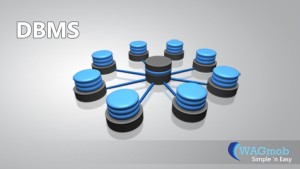 51. What is Domain-Key Normal Form?
51. What is Domain-Key Normal Form?
A relation is said to be in DKNF if all constraints and dependencies that should hold on the the constraint can be enforced by simply enforcing the domain constraint and key constraint on the relation.
52. What are partial, alternate,, artificial, compound and natural key?
Partial Key: It is a set of attributes that can uniquely identify weak entities and that are related to same owner entity. It is sometime called as Discriminator.
Alternate Key: All Candidate Keys excluding the Primary Key are known as Alternate Keys.
Artificial Key: If no obvious key, either stand alone or compound is available, then the last resort is to simply create a key, by assigning a unique number to each record or occurrence. Then this is known as developing an artificial key.
Compound Key: If no single data element uniquely identifies occurrences within a construct, then combining multiple elements to create a unique identifier for the construct is known as creating a compound key.
Natural Key: When one of the data elements stored within a construct is utilized as the primary key, then it is called the natural key.
53. What is indexing and what are the different kinds of indexing?
Indexing is a technique for determining how quickly specific data can be found.
Types:
Binary search style indexing
B-Tree indexing
Inverted list indexing
Memory resident table
Table indexing
54. What is system catalog or catalog relation? How is better known as?
A RDBMS maintains a description of all the data that it contains, information about every relation and index that it contains. This information is stored in a collection of relations maintained by the system called metadata. It is also called data dictionary.
55. What is meant by query optimization?
The phase that identifies an efficient execution plan for evaluating a query that has the least estimated cost is referred to as query optimization.
56. What is durability in DBMS?
Once the DBMS informs the user that a transaction has successfully completed, its effects should persist even if the system crashes before all its changes are reflected on disk. This property is called durability.
57. What do you mean by atomicity and aggregation?
Atomicity: Either all actions are carried out or none are. Users should not have to worry about the effect of incomplete transactions. DBMS ensures this by undoing the actions of incomplete transactions.
Aggregation: A concept which is used to model a relationship between a collection of entities and relationships. It is used when we need to express a relationship among relationships.
58. What is a Phantom Deadlock?
In distributed deadlock detection, the delay in propagating local information might cause the deadlock detection algorithms to identify deadlocks that do not really exist. Such situations are called phantom deadlocks and they lead to unnecessary aborts.
59. What is a checkpoint and When does it occur?
A Checkpoint is like a snapshot of the DBMS state. By taking checkpoints, the DBMS can reduce the amount of work to be done during restart in the event of subsequent crashes.
60. What are the different phases of transaction?
Different phases are
1.) Analysis phase,
2.) Redo Phase,
3.) Undo phas